The Most Famous Hemophilia Carrier
week, a country I have not been to since 1999. So I’ve been reading two
excellent books to prepare: Peter the Great and Nicolas and Alexandra, both by
Pulitzer-prize winning author Robert K. Massie.
hemophilia myths, got me thinking: Do you know who the most famous carrier of
hemophilia was? Hint: It’s why hemophilia is dubbed “The Royal Disease.”
Victoria of England, one of England’s longest reigning monarch. Her 63-year reign became known as the Victorian era, and was the longest reign until
September 9, 2015, when Queen Elizabeth II surpassed her. Her era saw British
power at its zenith across the globe; Victoria believed that the British Empire
existed to civilize people in less developed countries and to protect them from
their own rulers and the aggression of neighboring rulers. Others saw the
purely commercial aspect of this world domination of lands and trade routes.
her first cousin, Prince Albert of Saxe-Coburg and Gotha, in 1840. Over the
next seventeen years, she and Albert had nine children: Albert
Edward, (b. 1841), Alice (b. 1843), Alfred (b. 1844), Helena (b. 1846), Louise (b. 1848), Arthur (b. 1850), Leopold (b. 1853) and Beatrice (b. 1857).
The last child, Beatrice, was delivered under the care of Dr. John Snow, who
later became the founder of modern public health by discovering the
transmission mechanism of cholera (infected water). Snow used anesthesia on
Victoria, thus giving her pain-free childbirth for the first time! While Snow
did not invent anesthesia, he created a more convenient and safer way to administer
it.
political reasons), Victoria was called “the grandmother of Europe,”
and indeed was called “Granny” by all her grandchildren and their spouses.
royal family before, but Victoria carried the gene for hemophilia B. Only
Leopold had hemophilia; two daughters, Beatrice and Alice, were carriers. They
later transmitted hemophilia to the Spanish and Russian royal families.
affectionate yet stubborn prince, whose willfulness often led to injuries and
bleeds, according to author Massie. The Queen was unusually attached to her
son, and worried over him incessantly. Victoria reported in one letter that
Leopold had been at death’s door four or five times. Eventually Victoria tried
to keep him confined to the upper floors of Buckingham Palace for his own
protection, even as a man! But he managed to get away to Paris for two weeks.
Eventually at age 29, he fell in love with a German princess, Helen of Waldeck.
They had a daughter. When Helen was pregnant a second time, Leopold fell,
suffered a brain hemorrhage and died at age 31.
sons,” she lamented.
biographers, Victoria wrote an average of 2,500 words a day during her adult
life, and kept a detailed journal, which eventually encompassed 122 volumes. From this we
learned a bit about hemophilia in those days. The
Queen didn’t know what type of hemophilia her son had or if there even were
types; only much later, through genetic testing, was the family found to have
hemophilia B. While the mechanisms weren’t entirely understood, the royal
family knew that hemophilia could be passed down from generation to generation.
And it was; when it hit the Russian royal family, it would change the world.
For more information, read Robert K. Massie’s excellent books, or view “Nicolas and Alexandra,” a major motion picture and excellent portrayal of the last years of the Russian monarchy. Available on Amazon.com. Robert K. Massie also has an adult son, Robert K. Massie, Jr., who was later cured of his hemophilia through a liver transplant. His life is exquisitely portrayed in the book Journey.

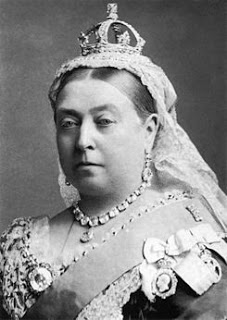

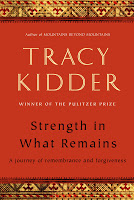
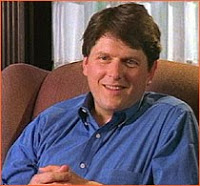
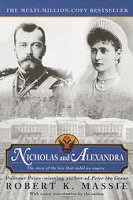 Little did I know Bobby Massie lived only two miles from my house at the time, Through our treatment center nurse, I was introduced to someone whose whole family I admired. Bobby and I met, and I found him very down to earth, intelligent, and above all stoic. He was suffering from not only hemophilia, but HIV and hep C. I later became friends with his mother, who worked with me to help kids with hemophilia in Russia, something she had been doing for some time. Suzanne became such an expert on all things Russian, that President Ronald Regan relied on her as an advisor for Russian policy, and she welcomed him to Russia, to the Pavlosk Palace, which she had helped to renovate. Remarkable family!
Little did I know Bobby Massie lived only two miles from my house at the time, Through our treatment center nurse, I was introduced to someone whose whole family I admired. Bobby and I met, and I found him very down to earth, intelligent, and above all stoic. He was suffering from not only hemophilia, but HIV and hep C. I later became friends with his mother, who worked with me to help kids with hemophilia in Russia, something she had been doing for some time. Suzanne became such an expert on all things Russian, that President Ronald Regan relied on her as an advisor for Russian policy, and she welcomed him to Russia, to the Pavlosk Palace, which she had helped to renovate. Remarkable family!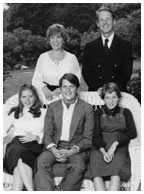
 Dan Dick, ordained minister of The United Methodist Church, writes: “The Shack is a spiritual Twinkie – sugary sweet with little or no nutritional value. The fantasy tale is very unevenly told, but framed as a might-have-happened second-person narrative. The spiritually naïve and immature might find this to be a deeply satisfying treat. Without a sound theological basis or the application of even the most basic critical thinking skills, a reader might mistake this as more than just a fairy tale.” I won’t rate it given I didn’t read it it and will add that someone I know and respect very much read this, was moved about the message of forgiveness and subsequently reached out to a family member long lost and repaired a relationship. In that regard, this book has great value! It just wasn’t my spiritual cup of tea.
Dan Dick, ordained minister of The United Methodist Church, writes: “The Shack is a spiritual Twinkie – sugary sweet with little or no nutritional value. The fantasy tale is very unevenly told, but framed as a might-have-happened second-person narrative. The spiritually naïve and immature might find this to be a deeply satisfying treat. Without a sound theological basis or the application of even the most basic critical thinking skills, a reader might mistake this as more than just a fairy tale.” I won’t rate it given I didn’t read it it and will add that someone I know and respect very much read this, was moved about the message of forgiveness and subsequently reached out to a family member long lost and repaired a relationship. In that regard, this book has great value! It just wasn’t my spiritual cup of tea.